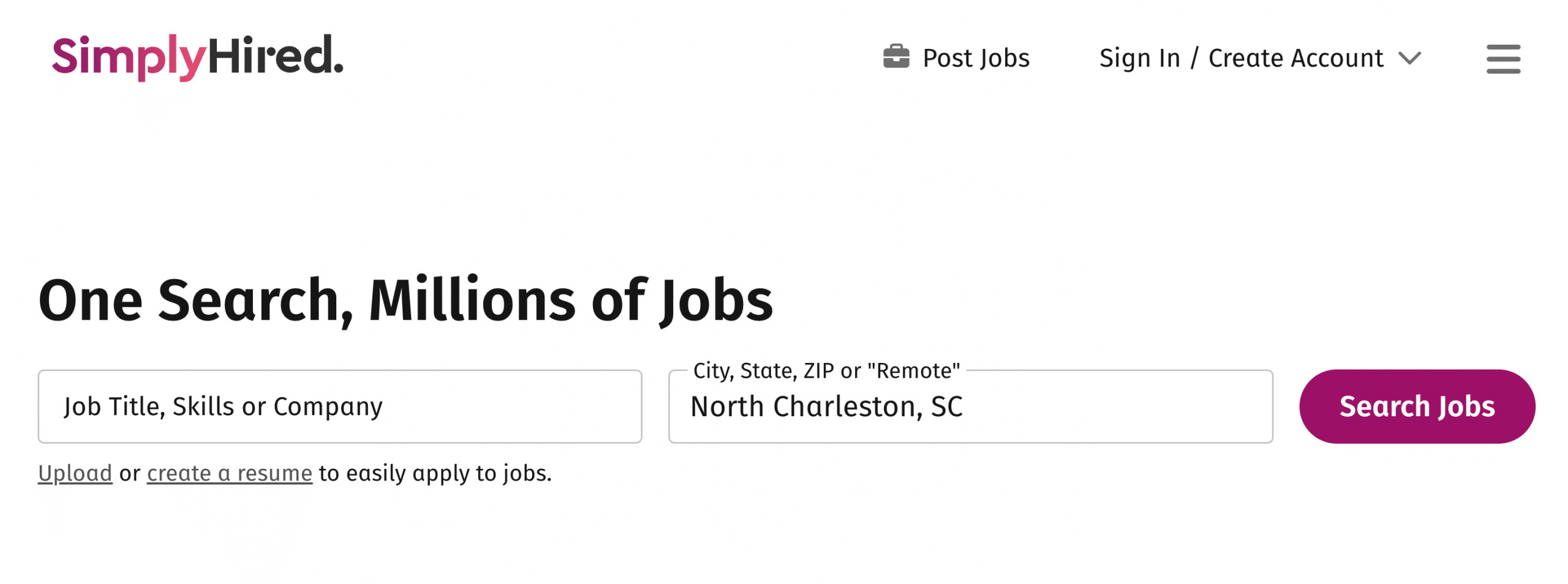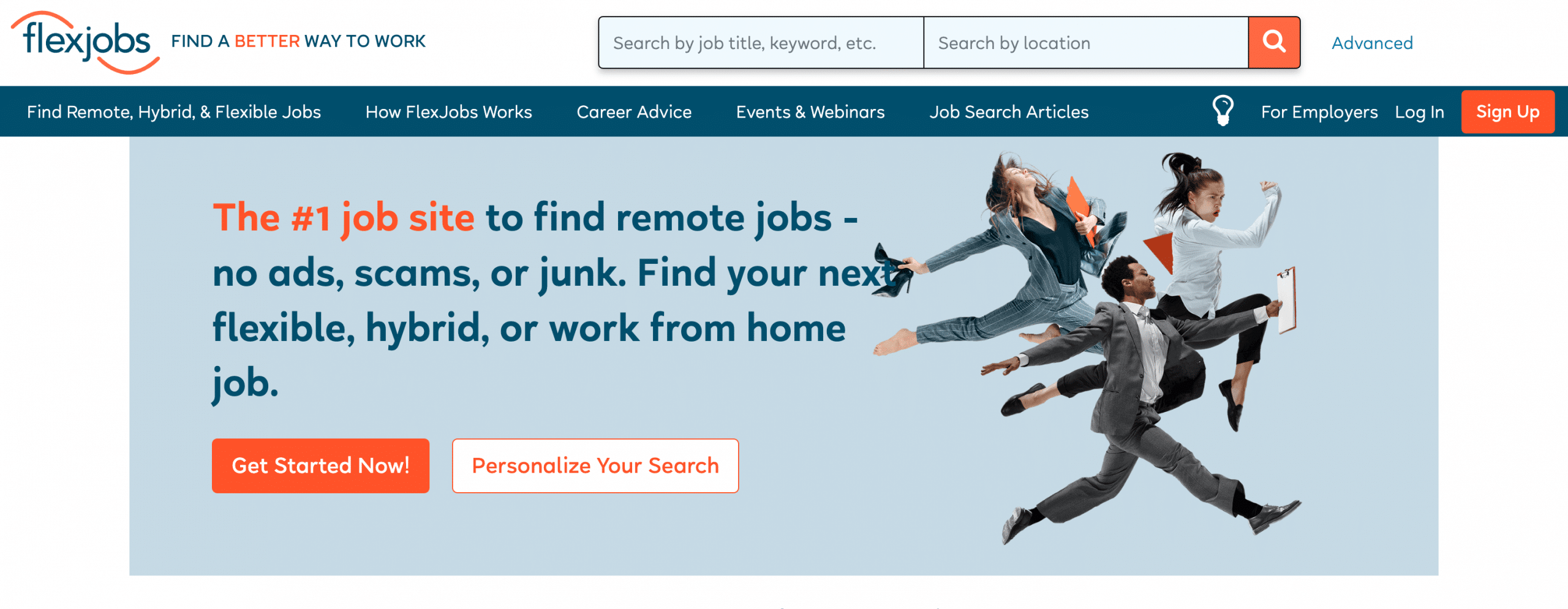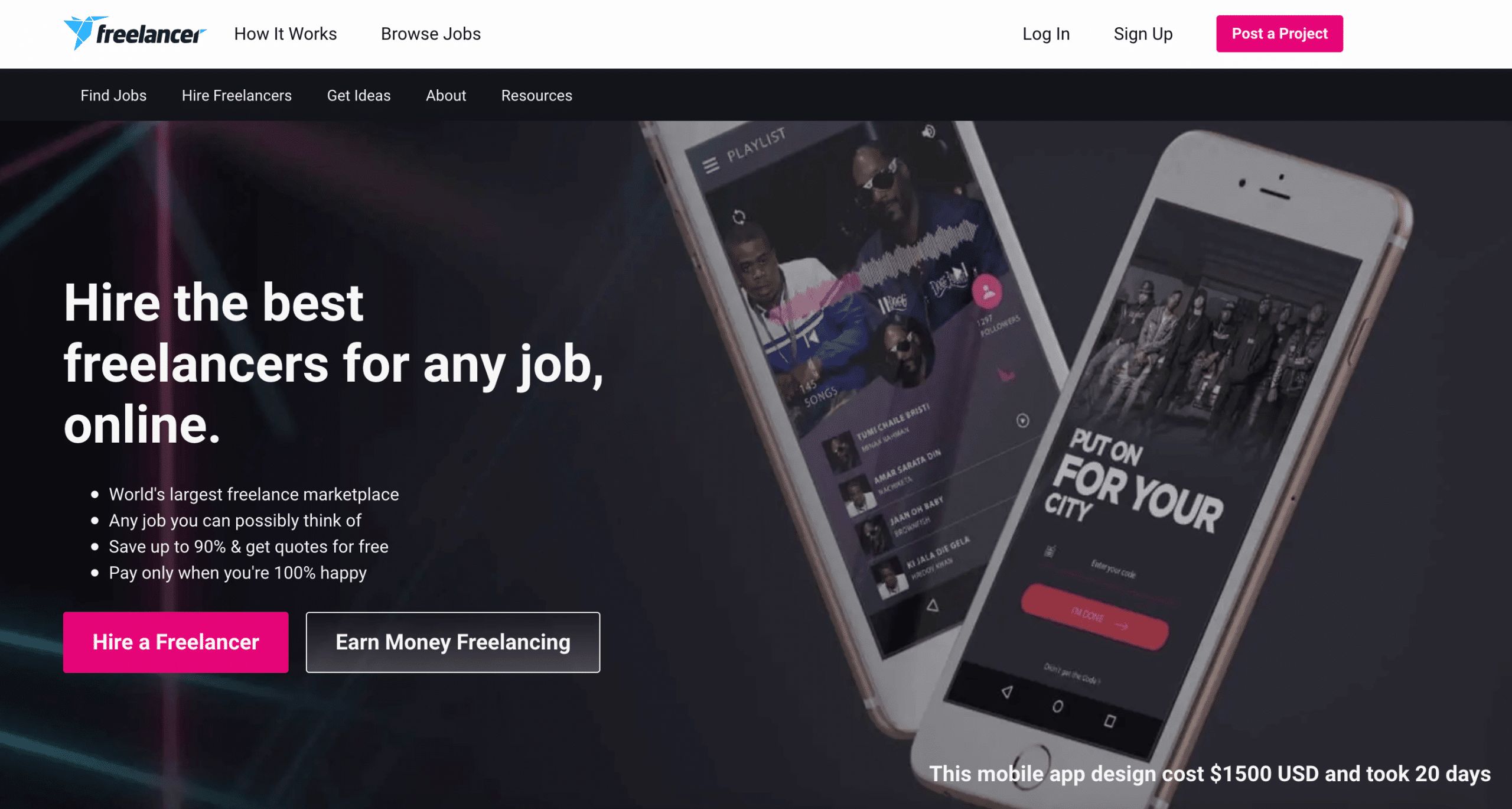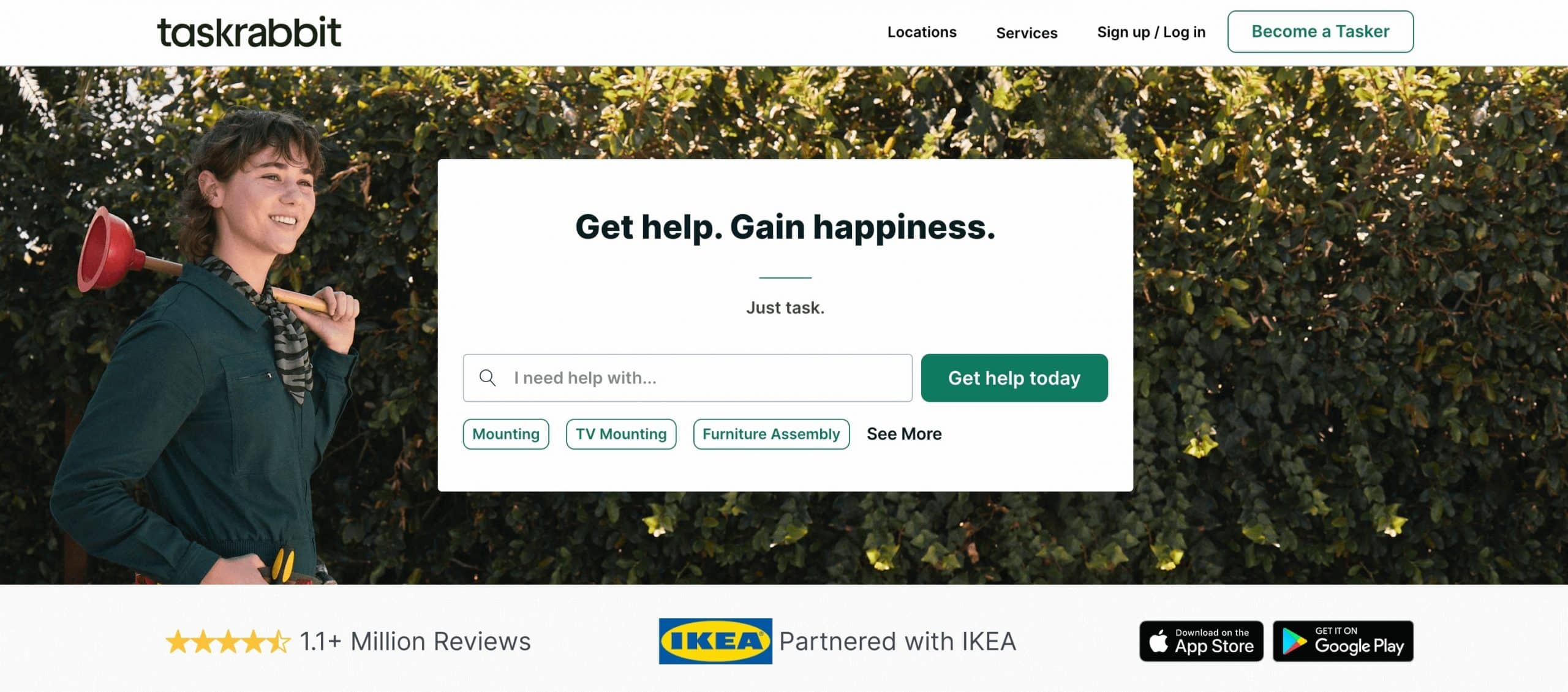Are you tired of struggling to find reliable clients online? You’re not alone. The freelance market is projected to grow to $455 billion in 2023, per Demand Sage‘s report. Knowing where to look for freelancing websites to find the best opportunities is crucial to succeeding in your career.
In this article, we will explore the 14 best freelancing websites to find work opportunities, so you can take advantage of the growing market and secure your place in the dynamic and thriving freelance economy.
How We Choose These Freelancing Website
To provide reliable recommendations for freelancers and clients, we thoroughly assessed multiple factors encompassing security, user-friendliness, and overall value. Our selection process involved a comprehensive analysis based on these criteria to ensure the platforms we suggest meet the highest standards in these areas.
- User base and job opportunities: Platforms with a more extensive user base generally have more job opportunities, which means more potential clients for remote workers.
- Freelancer profiles and skills: When starting, look for platforms that cater to diverse freelance skills or branch out based on your specialization.
- Pricing and fees: Consider the platform’s fee structure, as many freelancing platforms charge a commission fee on each job completed, which can affect earnings.
- Ease of use and platform features: Choose user-friendly platforms and offer valuable features for clients and remote workers, such as project management tools, communication channels, and payment protection.
- Client reviews and testimonials: Platforms that display client reviews and testimonials can help remote workers and freelancers build their reputations and attract more clients.
- Stability: Opt for platforms that have been around for a while and have a proven track record of success, as this can indicate their reliability and stability in the market.
- Website Integrity: Look for platforms that strongly focus on maintaining the integrity of their website, such as implementing strict vetting processes for remote workers, freelancers, and clients.
- Customer support: Choose platforms that offer responsive and helpful customer support, which can be crucial for resolving any issues.
14 Best Websites to Find Freelance Work
Navigating the gig economy journey can be overwhelming. However, these unique freelance websites alleviate the challenges by offering a robust platform that connects freelancers with tailored job opportunities. With their curated approach, remote workers can navigate the industry with confidence and efficiency.
1. Upwork

Upwork is the world’s largest and most popular freelance site, serving as an avenue for job seekers from various industries such as web development, graphic design, content writing, and more. With millions of users worldwide, the platform is recognized as one of the pioneers of remote work and freelancing in general.
As of May 3, 2023, Upwork has implemented a flat 10% freelancer service fee on all earnings, including hourly, fixed-price, or Project Catalog projects. Clients are charged a 3% processing fee for every payment made to freelancers and a one-time contract initiation fee of up to $4.95. Due to intense competition, freelance workers must showcase a great portfolio to stand out.
Getting a job on Upwork is based on bidding and submitting proposals via “connects.” Upwork also allows freelance workers to set up “Projects” where clients can order services like Fiverr, reducing the need to bid for freelance jobs. Job seekers must submit a bid showcasing their skills and experience relevant to the job requirements.
Pros:
- Easy to find freelance jobs and potential client
- Upwork handles contracts, billing, invoicing, and mediation
- Large talent pool with diverse skills and expertise
- Offers both fixed-price and hourly payment options
- Safe and secure hiring process with protected payments
Cons:
- Upwork charges a 10% fee on every transaction for freelancers
- High competition, with wide-ranging experience for beginners
- No guidance on writing job posts, such as checklists or templates
- Earnings may fluctuate due to the nature of freelancing
- Freelancers are responsible for every aspect of their business (taxes and benefits)
2. Fiverr

Fiverr is one of the biggest freelance websites that allow freelancers to offer their services without sending a bid. It has over 4.3 million active buyers and covers 160 countries with specialties in more than 500 categories of work opportunities like graphic design, freelance writing, web design, digital marketing, programming, data entry, and video animation.
As one of the best freelance job boards online, Fiverr allows remote workers to package their services and set prices, making it easy for buyers to purchase services without negotiation. When employers decide to hire freelancers, the platform will charge a flat fee of 20% for successfully-completed freelance gigs.
To find a job on Fiverr, users must create a profile showcasing their skills, expertise, and portfolio. But unlike other freelance websites, Fiverr allows users to create “gigs” that outline their services, pricing, and delivery timeframes.
A client will be the one who will approach the freelancer. This eliminates proposal wars as long as you have a compelling portfolio.
Pros:
- Easy to set up tiered products and services
- Wide range of services and categories to choose from
- Secure payment system
- Allows freelancers to showcase their work through portfolios
- Offers tiered services for freelancers to upsell their offerings
- A stable influx of jobs for web developers and programmers
Cons:
- High competition among freelancers for jobs
- Fiverr takes a 20% commission on every transaction
- Quality of work may vary due to the low-cost nature of gigs
- Some gig workers may face difficulties in increasing their gig prices
3. Toptal

Toptal is a high-end freelance marketplace known for its rigorous vetting process, which ensures that only the top 3% of applicants are accepted into the platform. It offers projects for developers and other professionals, particularly in software development, design, finance, project management, and product management.
The pricing varies according to a freelancer’s specialty, location, and type of project, with hourly rates ranging from $60 to $250 per hour. The platform is known for its stability and integrity, focusing on providing top-quality opportunities and services.
Remote workers must first pass the platform’s rigorous screening process. Once accepted, they can create a profile showcasing their skills and expertise. Clients can then search for talents based on their needs and directly hire them for their projects.
Pros:
- Access to high-quality projects and reputable clients
- A rigorous screening process ensures a network of top-tier professionals
- Offers remote and on-site hiring options
- Provides a trial period for clients to ensure satisfaction
- A supportive community of experts and resources for career growth
Cons:
- Highly competitive application process with only a 3% acceptance rate
- Limited to specific fields, excluding some creative niches
- Lengthy application process, taking 4-6 weeks to complete
- High fees for clients, which may lead to losing long-term opportunities
- Limited coverage of creative places, such as writing, voice acting, or video
4. LinkedIn

LinkedIn is a professional networking website with over 774 million members, connecting professionals, businesses, and job seekers worldwide. It caters to remote workers searching for freelance opportunities in graphic design, software development, design, finance, project management, and product management.
Remote workers must first create a LinkedIn profile showcasing their skills and expertise. Once their profile is complete, they can apply to join the ProFinder marketplace. Clients can then search for talents based on their needs and directly hire them for their projects.
Both freelancers and employers use LinkedIn due to the ease of finding new talents and acquiring new opportunities to earn money.
Pros:
- Access to an extensive network of professionals and potential client
- Opportunities across various industries and job types
- The “Open to Work” feature signals availability for freelance work
- Ability to showcase work experience, skills, and recommendations on profiles
- Users can leverage their existing connections to find job opportunities
Cons:
- Limited features for managing freelance projects and payments
- Networking and building connections can be time-consuming
- Freelance jobs may not be as frequent as on dedicated platforms
- Success on the forum may depend on network and profile optimization
5. Jooble

Jooble is a job search engine operating in 71 countries worldwide, aggregating job postings from various sources such as corporate websites, online job boards, and freelancing platforms. It caters to remote workers in technical projects, design, finance, project coordination, and product management.
This platform is free for job seekers, while employers can choose between a free plan and a paid premium plan for posting job vacancies. The platform is user-friendly and integrates with various applicant tracking systems. As a job search engine, Jooble focuses on providing a comprehensive list of job opportunities from multiple sources.
To explore job opportunities on Jooble, users can input relevant keywords associated with their target job and location within the search engine. Afterward, they can sift through the compiled job listings and submit applications directly via the originating websites.
Pros:
- Centralized job discovery from multiple sources
- No signup necessary to search for jobs
- Email alerts for new freelance work based on keywords
- Allows users to search for jobs within a specific region
Cons:
- No quick application feature – users must apply through each job vacancy’s source
- Not a dedicated freelance site like Upwork, so freelance jobs may be less frequent
- Limited features for managing freelance projects and payments compared to reliable freelance platforms
6. SimplyHired

SimplyHired is a well-known job site that serves both on-site and remote opportunities. Its extensive recruitment ads accommodate both novice and seasoned professionals, making it an attractive choice for millions of users seeking freelance and remote work.
The platform offers free access for job seekers, while employers pay to post job ads. SimplyHired has been around since 2004 and is considered a reliable source of jobs. Although not a freelance website, it still offers remote work in full-time, part-time, and contract positions.
You can discover freelance opportunities on SimplyHired by entering relevant keywords (e.g., “freelance writer”) and your location in the search bar. You can then refine your search using job type, salary, remote work-friendly, and experience level filters.
Pros:
- Wide range of recruitment ads across various industries
- Free for job seekers, with no hidden fees
- User-friendly interface and search filters
- Email alerts helps freelancers find and respond to the best match
- Jobseekers can track their applications
Cons:
- No built-in payment system or escrow service for workers
- Limited direct communication between job seekers and clients
- Employment ads may be duplicated from other sources
- No dedicated support for workers
- Competition can be high due to the platform’s popularity
7. Flexjobs

FlexJobs is one of the best freelance sites offering flexible, part-time, and freelance job opportunities. It caters to various industries, making it beginner-friendly for an aspiring freelancer. The platform currently has over 30,000 job adverts across more than 50 career categories, as reported by Entrepreneur.
This site offers a subscription-based model, with a one-year membership costing around $49. However, the price is worth it for job seekers and employers favoring short-term commitments (side hustles/short projects). Its subscription-based model may only be suitable for some users, and the platform may only cater to some job seekers due to its focus on remote and flexible jobs.
On FlexJobs, job seekers can browse and apply to thousands of remote and flexible job opportunities. The platform offers access to resources such as career content, coaching, and resume reviews.
Pros:
- Specializes in flexible, remote freelance jobs
- A thorough screening for job legitimacy
- Provides job seeker resources
- Offers skill-enhancing video courses
- Prioritizes job seekers’ needs
Cons:
- The subscription-based model may not be suitable for all freelance users
- Some users may find the subscription price too high
- The platform may not offer as many job listings as larger job search websites
- The venue may not cater to all job seekers, as it focuses on remote and flexible jobs
8. People Per Hour

PeoplePerHour is a global freelance marketplace that connects businesses with skilled freelancers across various industries. The platform is beginner-friendly and boasts over 1 million registered users. It is recognized for its commitment to providing legitimate and pre-screened job opportunities.
Freelancers on PeoplePerHour are charged a service fee based on their total earnings per client: 20% for earnings below £250, 7.5% for earnings between £250 and £5,000, and 3.5% for earnings above £5,000. The platform is known for its user-friendly interface and dependable service.
Freelancers can find jobs on PeoplePerHour by browsing posted projects and submitting proposals. The platform’s robust features facilitate problem-solving, business growth, and lasting working relationships.
Pros:
- Offers a diverse range of services and industries
- Pre-screened job opportunities for added legitimacy
- Intuitive and easy-to-navigate platform
- Provides payment protection
- Connects freelancers with clients from around the world
Cons:
- Total earnings per client determine service fees.
- Limited monthly free proposals, with the option to purchase additional proposals
- Users reported occasional issues with payment processing
- High competition among freelancers on the platform
- Mixed reviews regarding the quality of work available
9. Guru

Guru is a freelancing website that hosts professionals and groups offering services. It is known for its flexible and cost-effective platform, with over 800,000 employers worldwide. Guru caters to freelancers from various industries, including programming and development, writing and translation, design and art, and more.
Regarding pricing and fees, Guru charges a nominal handling fee of 2.9% for each invoice paid by the employer. However, if the employer uses eCheck or wire transfer, they will receive 100% cash back on the handling fee. The platform is easy to use, with a simple interface. Guru has been in business for over 20 years, offering a certain sense of stability and certainty.
To get a job on Guru, freelancers must submit proposals to clients, who will review them and choose the freelancer they want to work with.
Pros:
- A broad range of services and professional categories for freelance jobs
- Encourages experienced freelance workers to join through its membership structure
- Ability to commission work in multiple ways, such as hourly or milestone-based contracts
- It provides a clean layout and fairly intuitive navigation
- Wide variety of features for knowledge sharing and organization
Cons:
- The fee structure can be confusing, with added handling fees and commissions
- Dissatisfaction with the billing and arbitration processes
- Absence of live chat customer support, limiting speed and personalization of service
- Issues with search functionality
10. Freelancer

Freelancer is a freelancing site that connects employers and freelancers globally from over 247 countries, regions, and territories. It is known for its wide range of job opportunities. It caters to remote workers from various industries, including writing, data entry, design, engineering, the sciences, sales and marketing, accounting, and legal services. It is beginner-friendly and has a large user base of over 50 million registered users.
The website charges a 10% or $5.00 fee, whichever is higher when a project is awarded. For hourly projects, a 10% fee is applied to each payment made to the freelancer. This ensures a consistent fee structure for both fixed-price and hourly projects.
Platform users need to scroll for jobs that align with one’s skills and submit proposals to potential clients. Clients review the submissions and select the freelancer they wish to collaborate with. There is no fee for remote workers to submit a bid on the platform.
Pros:
- Large user base, offering a wide variety of projects and clients
- Great freelance website for beginners
- No need to pay to submit a proposal, allowing freelancers to apply for multiple jobs without additional costs
- Offers a wide range of industries, catering to various skill sets
- Provides a platform for freelancers to showcase their portfolios and skills
Cons:
- High competition for new freelance workers
- A large number of low-quality projects
- Fake job postings and scams
- 10% or 15% project fee
- Limited free bids per month
11. 99Designs

99Designs is a platform that connects businesses with freelance designers for various freelance design jobs, such as logos, web designs, illustrations, and more. It caters to a global community of professional designers and is beginner-friendly.
The website charges a platform fee based on the designer’s level. The platform fee is 5% for Top Level designers, 10% for Mid Level designers, and 15% for Entry Level designers. The platform is easy to use and has a reputation for stability and integrity.
Audience-wise, it’s a hub for graphic designers, illustrators, and other creative professionals. Clients post design contests or hire designers directly, making it a versatile platform for freelancers to find remote jobs.
Pros:
- Access to a global community of designers and artists
- Wide range of design categories and industries
- Opportunity to participate in design contests and showcase creativity
- Beginner-friendly platform
- No fee for submitting proposals
Cons:
- The contest model may lead to unpaid work
- Commission fee on earnings
- High competition can challenge new freelancers
- The feedback process with clients can be time-consuming
- Limited opportunities for non-design freelancers
12. TaskRabbit

TaskRabbit is a popular freelancer website offering a great way to find work across various industries, such as cleaning, handyman services, moving, and delivery. The platform is beginner-friendly and boasts a large user base, making it an attractive option for those seeking flexible job opportunities.
Pricing on TaskRabbit depends on the individual Tasker, with hourly rates ranging from $18 to $75. The platform is known for its ease of use, stability, and integrity. Taskers are free to set their prices, while clients pay a TaskRabbit service fee in addition to the Tasker’s rate.
Pros:
- Flexible scheduling for Taskers
- Taskers can set their rates
- A wide range of industries and tasks are available
- Beginner-friendly platform
- No fee for submitting proposals
Cons:
- An upfront fee of $25 is required to join the platform
- Work availability can be inconsistent
- TaskRabbit is not available everywhere
- Competition can be intense due to a large number of Taskers
- Limited support from management
13. Dribbble

Dribbble is a well-known platform that connects businesses with freelance designers for various design projects, including logos, web designs, illustrations, and more. Catering to a global community of professional designers, Dribbble is beginner-friendly and boasts over 12 million active users.
Designers can use Dribbble’s free plan, while clients pay for a Pro-Business subscription to access advanced features and browse contract and freelance job listings. The platform is recognized for its ease of use, stability, and integrity.
Freelancers can find work on Dribbble by showcasing their portfolios and engaging with the community. Submitting a proposal is free of charge, making it accessible for designers to apply for multiple jobs.
Pros:
- Engage with a large global community of professional designers
- Wide range of design categories and industries
- Beginner-friendly platform
- No fee for submitting proposals
- Opportunities for networking and collaboration
Cons:
- Competition can be intense due to a large number of designers
- Inconsistent work availability
- Clients need a Pro Business subscription to access advanced features and browse job listings.
- Limited communication between clients and designers
- No applicant tracking tools
14. DesignHill

Designhill is known as a creative crowdsourcing marketplace, started in 2014, catering to entrepreneurs and businesses of all sizes. The platform is recognized for logo, graphic, and web design. It caters to a global community of professional designers and is beginner-friendly, with over 125,000 registered designers.
Clients and freelancers can meet each other in design contests or directly through one-on-one projects facilitated by the platform’s database of creatives. DesignHill offers two payment providers: Payoneer and PayPal. Payoneer has no withdrawal fee and free activation with low charges applied.
On DesignHill, freelancers can secure job opportunities by setting up a profile and looking for projects that align with their expertise. Once they find suitable jobs, they can send proposals to potential clients. These clients will then evaluate the proposals and select the freelancer they want to collaborate with.
Pros:
- Design Hill connects freelancers with a global client base
- The platform ensures freelancers are paid for their work
- Freelancers can diversify their portfolios with varied projects
- You can sell your work on the platform
Cons:
- The platform can be highly competitive, making it hard to secure projects
- Freelancers may have less control over rates and client negotiations
- No guaranteed earnings for contests
Summary
And that’s it! We’ve explored the list of the 14 best freelancing websites in 2023, providing a comprehensive guide to help you kickstart or advance your freelance career. These websites cater to various skill sets and industries, ensuring you can find the perfect opportunity for your talents and interests.
If you’re looking for even more opportunities, don’t forget to check out Ahsuite’s “Teams” feature. This platform allows account owners to search for other users by name, email, or keywords in public profiles, making connecting with potential clients and collaborators easier.
As the freelance market grows, now is the perfect time to take advantage of these platforms and secure your place in the thriving freelance economy. So, explore these websites today, and take your freelancing career to new heights.
As the freelance market grows, now is the perfect time to take advantage of these platforms and secure your place in the thriving freelance economy. So, explore these websites today, and take your freelancing career to new heights.

